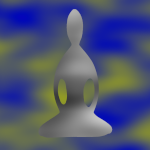Dear Friends,
We now get to dive into the fourth of the brahma vihāras, equanimity. Christina Feldman describes some of the meanings associated with this term:
The Pali/Sanskrit word [commonly translated as] “equanimity” finds a number of different translations that endeavour to capture its meaning: “to look over,” “to be a guardian of,” to see with patience and as standing in the middle of life with a boundless poise and balance. Some refer to equanimity as a spacious stillness of the heart.
page 108
There’s a poem that Susie, Jeanne, and others have shared that gives a sense of this quality of equanimity:
The Little Duck
by Donald C. BabcockNow we are ready to look at something pretty special.
It is a duck riding the ocean a hundred feet beyond the surf.
No, it isn’t a gull.A gull always has a raucous touch about him.
This is some sort of duck, and he cuddles in the swells.
He isn’t cold, and he is thinking things over.There is a great heaving in the Atlantic,
And he is a part of it.
He looks a little like a mandarin,Or the Lord Buddha meditating under the Bo tree
But he has hardly enough above the eyes to be a philosopher.
He has poise, however, which is what philosophers must have.He can rest while the Atlantic heaves, because he rests in the Atlantic.
Probably he doesn’t know how large the ocean is.
And neither do you.
But he realizes it.And what does he do, I ask you. He sits down in it.
He reposes in the immediate as if it were infinity – which it is.
That is religion, and the duck has it.He has made himself a part of the boundless,
by easing himself into it just where it touches him.
I like the little duck.He doesn’t know much.
as provided in https://stonecreekzencenter.org/2016/05/23/poems-from-the-may-22-2016-dharma-talk/
But he has religion.
from The New Yorker, v.23 no.33, October 4, 1947 , pp.38-9
Sylvia Boorstein provides some simple but lovely equanimity meditation instructions, having first given an analogy from an old TV sing-a-long show where a band played the melodies while song lyrics would show on the screen with a bouncing ball (think old-school karaoke):
Sit comfortably. Close your eyes. Meet each arriving moment—each breath, or each mood, each thought, or each idea—as the next word of the song that needs to get sung. You can choose what line of the score to sing—breath, mood, thought, idea—and still hear the others in the background. If you relax, you’ll be able to say, “Now this” and “Now this” and “Well, this is surprise, but—look!—I can manage this, too, and just in time to be here for this next experience, now arriving.” You don’t need to anticipate. If you fumble a moment, let it go. Sight-read the music. Just do it, now.
Sit for as long as you like. This is Equanimity meditation. It’s also Mindfulness.
Pay Attention, for Goodness’ Sake: The Buddhist Path of Kindness, page 259
So whether you want to take inspiration from the little duck, or you want to sing along with the melody of life, remember equanimity won’t start as unshakeable balance – it’s a practice. As Christina says, “Equanimity is a pathway, a way of being present, and a seed we cultivate, an ongoing journey of investigation.” (page 112)
Warm wishes,
Andrea
